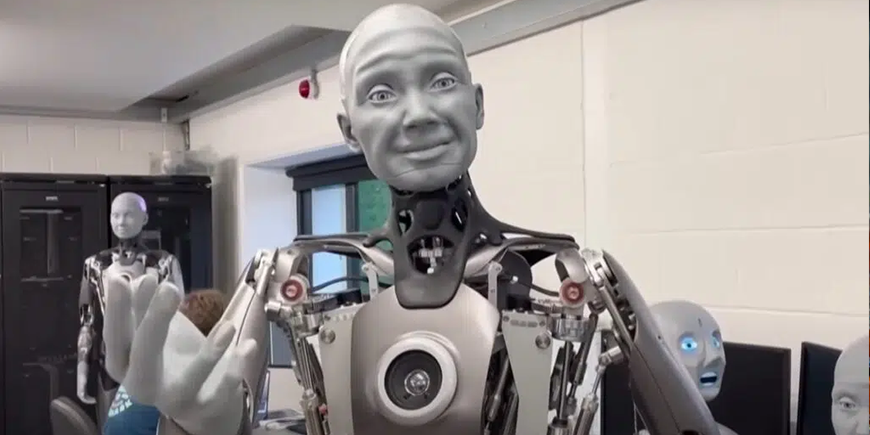Ameca is a humanoid robot from Engineered Arts that can reproduce a wide range of facial expressions with unprecedented fluidity.
Its facial expressions are so accurate that even its creators find it “frightening”: we are talking about Ameca, the latest robot ready to astonish the world. Created by Engineered Arts, which has described it as “the most advanced humanoid robot in the world”, the automaton has demonstrated sensational expressive capabilities.
Ameca reacts when a person approaches it and when he or she tries to invade its personal space: the robot curiously follows movements, studies them and reacts to stimuli not only by moving but also by displaying different moods.
The Ameca robot’s facial expressions
First there was Mesmer, a system for creating realistic robots with hair, eyebrows, moustaches and beards; now Engineered Arts’ new challenge is Ameca, the robot face of the future of robotics. A platform for the development of robotic technologies, the automaton offers a frighteningly accurate range of facial expressions.
And it is scary (in a good way): in the latest videos released by Engineered Arts, Ameca performs a variety of facial expressions, perfectly reproducing different moods such as curiosity, annoyance and happiness. As well as the number of expressions, the fluidity with which they are reproduced is astounding: the change is imperceptible and natural, almost to the point of being human.
Ameca is modular in both hardware and software: he robot can be upgraded and customised, and it is not necessary to own everything to see it in action. The robot can also recognise the facial expressions of the person in front of it, identifying not only their age and gender, but also the emotions they are feeling. Facial recognition takes place at a distance of about 2 metres from the robot, although Ameca is able to detect any movement in the room in which it is located.

Ameca weighs 49 kg and can perform 51 different movements with its torso and arms; it is over 1.80 m tall and has an equally large arm span. The robot has 52 motors, most of which are located in the upper body. Using the cloud, the automaton enables human-robot telepresence, allowing real-time conversations between different locations around the world.
The robot is already for sale, although no price is given on the company’s website. Considering the price of other Engineered Arts robots, the cost would certainly be over 80 thousand dollars. Ameca can also be hired, for example for events or conferences.
Fields of application
Ameca, like the other Engineered Arts robots, cannot walk, but was designed as a platform for the development of new technologies. The robot was created from the perspective of AI x AB systems, where human-like artificial intelligence needs a human-like artificial body to express its full potential. These are systems in which the AI studies and reproduces human aspects, which then need humanoid support to be fully exploited.
Ameca can interface seamlessly with the company’s other products, such as Tritium and Mesmer. The former is Engineered Arts’ proprietary framework and the “brain” behind each of the company’s vending machines; the latter, as mentioned above, is the company’s flagship humanoid robot (at least for now).

In addition to research and development, the robot can be used as a means of ‘human’ communication at a distance, or simply as an attraction at various types of events. As the robot is modular, each team can decide which part of the robot to use, depending on their research objectives. Once again, robotics has shown how far into the future it is and how many boundaries it can overcome.
Sources and Data
- Ameca, il robot umanoide dalle incredibili espressioni facciali
- Ameca, The Future Face Of Robotics | Engineered Arts


